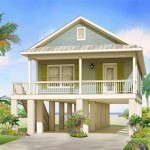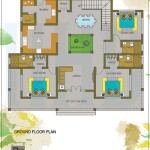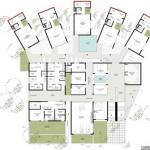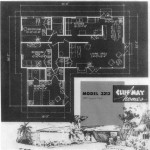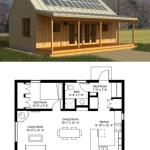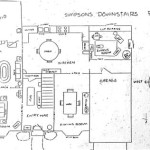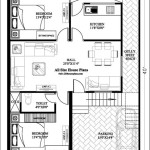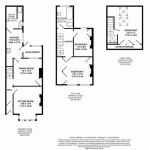House Plans For 3000 Sq Ft Single Story Extension
Expanding an existing home with a single-story extension is a significant undertaking that requires careful planning and consideration. A 3000 sq ft single-story extension represents a substantial increase in living space, offering opportunities to create new functional areas, enhance existing amenities, and dramatically alter the overall aesthetic of the property. Developing suitable house plans for such a project necessitates a thorough understanding of the homeowner's needs, the existing structure's limitations, local building codes, and budgetary constraints.
The initial phase involves a comprehensive assessment of the existing house. This includes evaluating the structural integrity of the foundation, walls, and roof to determine their ability to support the new extension. A structural engineer may be required to conduct a detailed analysis, especially if the extension will necessitate load-bearing modifications to the original building. Understanding the existing plumbing, electrical, and HVAC systems is also crucial for seamless integration of the new space. Furthermore, the soil composition of the building site needs to be analyzed to ensure proper foundation design for the extension.
Following the structural assessment, the next step involves defining the functional requirements of the extension. What spaces are needed? Are you looking for additional bedrooms, a larger kitchen, a home office, a recreational area, or a combination of these? The intended use of the extension will heavily influence the layout and design of the house plans. Consider the flow of traffic between the existing house and the extension. Optimizing the spatial arrangement will maximize usability and comfort.
Different house plans for a 3000 sq ft single-story extension can incorporate various architectural styles. The extension should ideally complement the existing house's style, whether it's traditional, modern, or contemporary. However, it's also possible to create a contrasting design that adds visual interest. The choice of materials, roofline, and exterior finishes should be carefully considered to achieve a cohesive and aesthetically pleasing result. Consulting with an architect or experienced home designer is highly recommended to explore different design options and create plans that meet both functional and aesthetic requirements.
Consideration of Zoning Regulations and Building Codes
Navigating zoning regulations and building codes is a critical aspect of planning a 3000 sq ft single-story extension. Local zoning ordinances dictate permissible building sizes, setbacks from property lines, height restrictions, and other factors that can impact the design of the extension. Failing to comply with these regulations can lead to costly delays and legal issues. Building codes, on the other hand, specify minimum standards for construction materials, structural integrity, safety features, and energy efficiency. Obtaining the necessary permits and approvals from local authorities is essential before commencing any construction work. A qualified architect or contractor can assist in navigating the permit application process and ensuring compliance with all applicable regulations.
Adhering to accessibility standards is another crucial consideration. If the extension is intended for use by individuals with mobility limitations, it should be designed to comply with accessibility guidelines, such as those outlined in the Americans with Disabilities Act (ADA). This may involve incorporating wider doorways, ramps, grab bars, and other features that enhance accessibility and usability. Furthermore, incorporating sustainable design principles into the house plans can improve energy efficiency, reduce environmental impact, and lower operating costs. This may involve using energy-efficient windows and doors, installing high-performance insulation, incorporating solar panels, and implementing water-saving fixtures.
The location of the extension on the property is also a crucial factor. The orientation of the extension can significantly impact natural light and solar gain. Proper orientation can minimize the need for artificial lighting and heating, thereby reducing energy consumption. Consider the placement of windows and doors to maximize natural light and ventilation while minimizing glare and heat gain. Landscaping around the extension can also play a role in regulating temperature and providing privacy. Trees and shrubs can provide shade in the summer and wind protection in the winter. Careful consideration of these factors can lead to a more comfortable and energy-efficient living space.
The roofline of the extension should blend seamlessly with the existing house. This can be achieved by matching the roof pitch, materials, and style. However, it's also possible to create a unique roofline that adds visual interest. Options include a gable roof, hip roof, shed roof, or flat roof. The choice of roofline will depend on the architectural style of the extension and the desired aesthetic. Proper insulation of the roof is essential for energy efficiency. Consider using reflective roofing materials to reduce heat gain in the summer.
Importance of Interior Design and Layout
The interior design and layout of the 3000 sq ft single-story extension are critical for creating a functional and comfortable living space. The layout should maximize the use of space and provide a seamless flow between different areas. Consider the placement of furniture, appliances, and fixtures to ensure that the space is both practical and aesthetically pleasing. The selection of materials, colors, and finishes should complement the overall design and create a cohesive look. Incorporating natural light and ventilation is essential for creating a healthy and comfortable indoor environment.
When planning the interior layout, consider the specific needs of the occupants. If the extension is intended for use as a family room, it should be designed to accommodate comfortable seating, entertainment systems, and storage for toys and games. If the extension is intended for use as a home office, it should be designed to provide a quiet and productive workspace with ample storage and good lighting. The layout should be flexible enough to adapt to changing needs over time. Consider incorporating multi-functional spaces that can be used for different purposes.
The choice of flooring, wall finishes, and lighting fixtures can significantly impact the overall look and feel of the extension. Consider using durable and easy-to-maintain materials that are appropriate for the intended use of the space. The color palette should be carefully chosen to create a harmonious and inviting atmosphere. Natural light should be supplemented with artificial lighting to provide adequate illumination throughout the day and night. Consider using energy-efficient LED lighting fixtures to reduce energy consumption.
Storage is another important consideration in the interior design. Incorporating ample storage space will help to keep the extension organized and uncluttered. Consider using built-in storage solutions, such as shelves, cabinets, and drawers, to maximize space and functionality. The placement of storage should be carefully considered to ensure that it is easily accessible and convenient to use.
Budgeting and Cost Considerations
Developing a realistic budget is crucial for successfully completing a 3000 sq ft single-story extension project. The cost of the extension will depend on a variety of factors, including the complexity of the design, the quality of materials, the labor costs in the area, and any unforeseen challenges that may arise during construction. It's essential to obtain multiple bids from qualified contractors to get a clear understanding of the potential costs involved. A detailed budget should include expenses for architectural plans, permits, materials, labor, landscaping, and any other associated costs.
It's prudent to allocate a contingency fund to cover unexpected expenses that may arise during the construction process. A contingency fund of 10-15% of the total project cost is generally recommended. This will help to prevent cost overruns and ensure that the project stays on track. Regularly monitoring the budget and tracking expenses is essential for managing the project effectively. Consider using project management software or a spreadsheet to track costs and identify potential problems early on.
Value engineering is a process of identifying ways to reduce costs without compromising quality or functionality. This may involve selecting alternative materials, simplifying the design, or optimizing the construction process. Working closely with the architect and contractor can help to identify cost-saving opportunities. However, it's important to avoid cutting corners that could compromise the structural integrity or safety of the extension.
The financing options available for the extension project should be carefully considered. Options include home equity loans, personal loans, and construction loans. Each option has its own advantages and disadvantages in terms of interest rates, repayment terms, and eligibility requirements. Shop around for the best financing option that meets your needs and budget. Consult with a financial advisor to determine the most appropriate financing strategy. Remember to factor in interest payments and loan fees when calculating the overall cost of the extension.
Ultimately, careful planning, realistic budgeting, and effective project management are essential for successfully executing a 3000 sq ft single-story extension project. By addressing these key considerations, homeowners can create a beautiful and functional addition to their homes that meets their needs and enhances their lifestyle.

Plan 52961 One Story Best Ing Florida Style House

Charming One Story Home With Sun Room 4570

House Plans With Keeping Room Options Designs Ideas

Ponderosa West House Plan Luxury Ranch Home Design M 3754 J

Farm House Style Plan 3197 Corbett

Plan 52952 Coastal Contemporary House With 3296 Sq Ft 3 B

Best Open Concept Barndominium Floor Plans That Maximize Space And Functionality

5 Bedroom House Plan Examples

Best 4 Bedroom Floor Plan Under 3 000 Square Feet Really Struggling

Plan 52994 Coastal Home With 4 Bedrooms

